#global climate change
Text
The study, published in Ecology and Evolution, explores forests that experience "cold-air pooling," a phenomenon where cold air at higher elevations drains down into lower-lying valleys, reversing the expected temperatures—warm at the bottom, cold at the top—that typically occurs in mountainous areas. That is, the air temperature drops with descent from mountain to valley.
"With temperature inversions, we also see vegetation inversions," says lead study author and former UVM postdoctoral researcher Melissa Pastore. "Instead of finding more cold-preferring species like spruce and fir at high elevations, we found them in lower elevations—just the opposite of what we expect."
And the effect on these ecosystems is substantial: "This cold-air pooling is fundamentally structuring the forest," says study co-author and UVM professor Carol Adair.
This insight "can help forest managers prioritize and protect areas with frequent and strong cold-air pooling to preserve cold-loving species as the climate warms," says Adair.
The researchers looked at three forested sites in New England, ranging from the shallow, crater-like Nulhegan Basin of Vermont's Northeast Kingdom, to the higher peaks and deeper valleys of the Green Mountains, over two years. They collected data on the types of trees present across elevation transects and monitored temperature hourly.
The researchers found that, far from being the occasional nighttime, seasonal phenomenon it's historically been thought to be, cold-air pooling happens frequently, year-round, well into daylight hours, Adair says. The phenomenon occurred at every site they studied, but was strongest at the site with the shallowest elevation change.
Refuge in a changing climate
Locations experiencing this phenomenon might prove essential to conservation efforts aimed at preserving cold-adapted species, even as the larger climate warms, Pastore notes. "These cold-air-pooling areas could be valuable targets for small areas that provide a refuge from climate change; they're areas that might be buffered from, or even decoupled from, climate change, and they're harboring cold-adapted species that we know are vulnerable."
She adds that conserving such locations may provide enough time for species to adapt to climate change by either migrating, or by mixing genes with neighbors to assume traits needed for survival in a hotter world.
In this way, Pastore says, "These pockets of cold habitat can act as steppingstones for some species—can buy them that time."
Conserving such locations may have practical applications, as well, says Adair, "including carbon storage and small-scale recreational opportunities," adding that cold-loving coniferous tree communities tend to store more carbon than deciduous trees, and forest soils may also hold onto moisture longer—important during periods of extreme rain.
Cold-air pooling has been historically and anecdotally observed elsewhere, Adair says, but this study is the first to quantify it to this degree across many sites beneath the forest canopy, and more research is planned to explore its temporal and geographic extent.
Cold-air pooling is not a panacea, Pastore warns. These forests are "still going to warm—I definitely don't want to say these are complete safe havens, because climate change will happen there, too—but it might be slower, and maybe species that might otherwise disappear in a warmer climate will remain longer in these locations."
The research is highly relevant in a changing climate, as ecologists seek to model what may happen to species that require cold conditions. "If you don't have this process in your model," Adair says, "you're going to miss that there are these areas where cold-loving species can persist and are persisting."
The work has been a hopeful change of pace, Adair says. "I'm excited about the fact that this is good news, in a way. These areas can help cold-adapted species persist." She adds, "A lot of my research is telling people why bad things are happening, so this is nice. It's not all good news, but it's some good news. These places exist. We can use them. They're important. They're clearly structuring forests."
#good news#global climate change#climate crisis#environmentalism#science#environment#forests#climate resilience#nature#conservation#climate change#animals#cold forests#climate change adaptation#climate change resiliency
25 notes
·
View notes
Text
The sheer amount of unbotheredness Californians are displaying right now, including myself, is kinda hilarious and terrifying.
405 notes
·
View notes
Photo
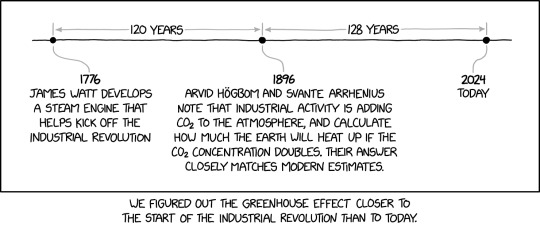
(via xkcd: Greenhouse Effect)
96 notes
·
View notes
Text
Anybody else completely unable to enjoy warm fall weather because it’s just a reminder of the progress of climate change? Because yeah, when I was little, our autumn weather was much cooler.
#climate change#climate crisis#climate emergency#global climate change#warm weather#fall#autumn#climate anxiety#global warming#weather#temperature#environmentalism#environmental activism#save the earth#protect the earth#leftblr#leftist#communist#socialist#communism#socialism#anti capitalist#anti capitalism#leftist politics#human rights
118 notes
·
View notes
Text
"We can just send robots to the poles to make new ice! This is a reasonable solution!"
No it's not.
Can we send boats to the poles to make more ice? Yes.
But tell me, tell me: why are they melting in the first place?
Because the ice caps do not, on their own, keep Earth cool. They help, because of albedo (which is not a word I think anyone on the post I'm vagueing about even knows). And personally, if you don't actually know why and how the ice caps help keep Earth cool and why them melting is bad, if you don't understand positive feedback cycles... then stop talking about ice robots.
Because making more ice using solar-powered robot boats isn't like... harmful, theoretically. But it's not fixing the problem.
Example:
Imagine you have a bathtub. You want to keep the water in the bathtub cool. In the past this was easy to do because the thermostat in the house was set to a cool-warm cycle and it maintained itself just fine. Part of the bathtub was permanently frozen, and some ice froze and melted regularly throughout the year. You didn't have to do anything! Life was great.
Now imagine someone has gone down to the basement and cranked the house's heat onto high. The ice in the bathtub has started to melt, and even when the house goes through its cool cycle, not all of the ice comes back. Over and over, more and more ice is melting.
Can you run downstairs, go to the fridge, grab a cup of icecubes, run upstairs, and pour them into the tub? Yeah, sure. You could do that. Meanwhile, the average temperature in the house is getting warmer and warmer, so each trip you need to grab more ice, until you're carrying two buckets at a time. And you can keep doing that until your legs get tired and you can't possibly go on. But eventually, you're going to hit a point where you can't carry enough ice on each trip to keep the tub cool - all the ice melts in between your trips up and down the stairs. You spent all that time and all that effort on an activity that did not fix the actual problem, which is the fact that someone turned up the thermostat.
That is what "let's send ice robots to the poles!" will do. It will, temporarily, help maintain ice levels near the poles. But it will not remove greenhouse gases from the atmosphere. It will not stop countries from emitting more greenhouse gasses. It will not remove subsidies from the oil and gas industry worldwide. It'll probably make someone like Elon Musk a shit ton of money, and it'll make you ~feel good~.
But it won't fix the problem, which is global warming due to human-driven emissions of greenhouse gasses.
14 notes
·
View notes
Text
Where is the snow. It's raining. Fucking STILL I saw WORMS in my BARE GRASSY YARD TWO FUCKING NIGHTS AGO. WORMS. In DECEMBER. and it's RAINING.
(More swearing and whatnot below the line)
IT'S FUCKING DECEMBER- IT'S FUCKING CHRISTMAS IN THE FUCKING MIDWEST THERE IS NO SNOW AND IT'S IN THE FUCKING 40 DEGREES RANGE AND THERE IS NO SNOWWWWWW???!!!!!!?!??!??!?? AND IT'S RAINING???!!!???!?!?!?!@(#$;9@+*!#9@)
Never in my 21 years of Midwest weather bULLSHIT have I EVEr had this kind of fuckery occured WHERE IS THE SNOWWWWWWWWWWWW WHAT THE FFFFFUUUUCCCCCCCCCKKKKKKKKKKK?!?!
#fucking climate change#climate change#climate crisis#WHERE IS THE SNOW#RAINING FOR THE SECOND DAY IN A ROW IN DECEMBERRRRR IN THE MIDWESSSTTTTT#WHAT IS THISSSSSSSSSSSS#global warming#global climate change#there should be like a fucking foot of snow MINIMUM where i live WTF#christmas adam christmas eve and fucking christmas (we don't even really celebrate christmas but my DUDES????) ALL WITHOUT SNOW?!?!?!!?!!?!?#WHERE IS MY WHITE CHRISTMAS I LIVE IN THE MIDWEST FOR FUCKS SAKE????????????????????
10 notes
·
View notes
Text
The Arctic ice sheets are melting. Many already understand that is will lead to sea-level rise, but there is another effect that this may have on the world. In the past the melting of large masses of ice in the Artic Ocean has happened before and they had massive effects on the climate. Europe cooled dramatically, especially in winter, and Asia showed signs of desertification. Climatologists believe that these temporary climatic shifts may happen again now that the Arctic ice sheets are melting due to human driven climate change.
You may wonder how melting ice sheets may make parts of the world cooler. Some might know of the albedo effect. The white of the ice reflects the energy of the sun back into space. As the ice melts there is less white to reflect the energy and more heat remains on Earth. If the heat is increasing, then how can parts of the world become cooler? This is because the chain reaction that leads to potential cooling isn’t linked to the amount of ice left, but the amount melted. When ice melts, fresh water is added to the ocean and this influences how the ocean functions.
Oceanic circulation is often called a conveyor belt by oceanographers. Ocean waters rise in the Northern Pacific Ocean and the Indian Ocean. Then they travel across the surface to eventually sink again in the North Atlantic Ocean. From there they travel across the bottom of the ocean back to the Pacific and the Indian Oceans. Figure 1 shows this circulation. It takes centuries for waters to travel along the entire conveyor belt, but if the circulation gets disturbed the effects may be noticeable quite a bit faster. This may be a good hundred years, but that is quite fast on a geological time scale.

Figure 1: This map shows a simplified image of the Great Ocean Conveyor Belt. Arrows indicate the direction in which the water travels. Blue indicates deep water currents and red indicates surface water currents (Source: IPCC 1996, based on Broecker (1987)).
So what happens if a lot of fresh water from icebergs gets added in the area where the waters sink? To answer this question we need to know the mechanisms behind the sinking of these waters or, as it is also called, the North Atlantic Deep Water formation. The warmer waters that arrive from the south are saltier without being heavy. This is due to the different properties water can have at different temperatures. As the waters travel north they become colder. The higher salt content causes the waters to become heavier and eventually sink. Much like water evaporates more when the air is warm and then falls down as rain when the air cools. When fresh water is added to these waters their salt concentration decreases and therefore the speed at which they sink decreases as well.
Scientists have measured a slowing down of North Atlantic Deep Water formation in certain places in recent years. They have also observed mass melting of icebergs in the distant past. These are called Heinrich events and can be observed in oceanic sediment by the large rocks that fell as the icebergs melted. Both computer models and natural records from prehistoric times show a chain of events caused by this melting and subsequent slowing and/or stopping of the North Atlantic Deep Water formation. Figure 2 shows a simplified map of climate anomalies from an event that happened 8,200 years ago. Lands near the North Atlantic cooled down, especially during winter, Africa and Asia saw decreases in rain, and the Americas suffered from increased winds.

Figure 2: Summary map of climate anomalies during the 8k event (from Alley & Argustsdottir (2005)).
But how can one part of this circulation cause effects as far away as India? Lets go back to the name ‘conveyor belt’. If you stick a screwdriver in the place where the conveyor belt at a supermarket cash registry disappears down, the whole belt will stop moving. The same applies to the oceanic conveyor belt to a degree. If no more water sinks in the North Atlantic Ocean the rest of the system will slow down and stop as well. The oceans have a massive influence on the climate of the world, especially on landmasses near these oceans. Warm waters from the equatorial region move north and release their heat (also shown in figure 1). During winters this means that temperatures do not get as low as they could. If no more warm waters move north this influx of warmth is also gone. North America and Europe suffer much colder winters in this scenario. Models and prehistoric records have shown the formation of sea ice in Europe in these conditions. In Africa and Asia monsoons are very important for the formation of rain. Monsoons form due to the balance of ocean temperatures and land temperatures. The slowing and/or stopping of the ocean conveyor belt will change this balance and the characteristics of the monsoons will change, leaving Africa and Asia drier than before.
However, we shouldn’t panic and start worrying about apocalyptic winters in Europe or massive crop failures in Africa and Asia just yet. The Earth’s climate is a system about balances. A balance can be upheaved, but as long as certain thresholds aren’t passed the balance will be restored. The slowing of North Atlantic Deep Water formation that has been measured in certain spots recently doesn’t mean that the whole system will be messed up. In other areas the waters are still sinking at regular speeds and scientists haven’t measured any of the other waters moving towards these sinking spots slowing down. Even if it came to it, the conveyor belt can restart and speed back up again, as it has in the past. This article isn’t written for the purpose of scaremongering. It is a look at a truly tiny part of the massive system of checks and balances that influence the climate on Earth. How complicated it is to predict how the human driven climate change will effect the Earth in the long term. There is a reason why we changed from talking about Global Warming to Climate Change. In the past Heinrich events and the climatic changes linked to it were most often observed at the end of ice ages. The Earth was warming, but would temporarily cool down again. However, the forcing behind the warming was too strong and the Earth would continue to warm. If the forcing had not been as strong, the Earth could have gone back to the way it had been before (the ocean conveyor belt never stayed still). This is why we talk about thresholds and tipping points. The Earth can regain her balance. It will take a long time, but we can help her along the way.
If you want to read more about the North Atlantic ‘conveyor belt’ and the associated climatic changes a good place to start is: Alley, R. B. (2007). Wally was right: Predictive ability of the North Atlantic" Conveyor belt" hypothesis for abrupt climate change. Annual Review of earth and Planetary sciences, 35(1), 241-272.
Reference:
Alley, R. B., & Ágústsdóttir, A. M. (2005). The 8k event: cause and consequences of a major Holocene abrupt climate change. Quaternary Science Reviews, 24(10-11), 1123-1149.
#climate change#climate crisis#climateaction#crisis#environmental activism#activism#climate activism#activist#climate science#climate#weather#glacier#atlantic records#conveyor belts#arctic#ice sheets#ice caps#melting#global climate change#global
93 notes
·
View notes
Text

12 notes
·
View notes
Text
Honest question:
Why is “Permanently get rid of the hundred or so people who are actively and intentionally killing our planet, endangering billions of human lives not to mention every other living thing in the world, and who are also all incredibly immoral people who will go to any lengths including slavery in order to satisfy their personal greed”
Considered a “Radical and unjust idea we should never ever do”?
Asking for a friend.
10 notes
·
View notes
Text
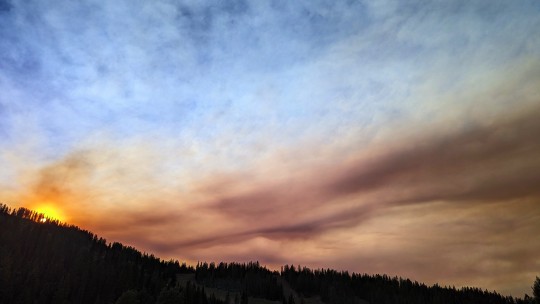
Wildfire Smoke Over Lookout Pass, Idaho. August 18, 2023.
#wildfires#global climate change#global climate crisis#idaho#my photo#woodsfae#photography#landscape photography#fires#natural disaster#forest fires#sunset#mountains#evening#sky
8 notes
·
View notes
Text
#good news#environmentalism#science#nature#environment#climate change#europe#european union#climate crisis#global climate change#climate#climate action
305 notes
·
View notes
Photo
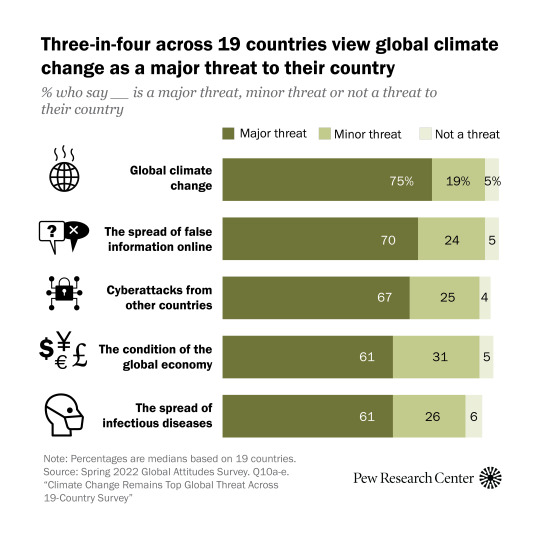
With the COVID-19 pandemic still raging, a hot war between Russia and Ukraine ongoing, inflation rates rising globally and heat records being smashed across parts of the world, countries are facing a wide variety of challenges in 2022.
Among the many threats facing the globe, climate change stands out as a strong concern among citizens in advanced economies. A median of 75% across 19 countries label global climate change as a major threat. Majorities in most countries surveyed also view the spread of false information online, cyberattacks from other countries, the condition of the global economy and the spread of infectious diseases as major threats to their nations.
Read more: Climate Change Remains Top Global Threat Across 19-Country Survey
63 notes
·
View notes
Text
i live in the far north it’s supposed to be the dead of winter and the trees and bushes are starting to bud
2 notes
·
View notes
Text
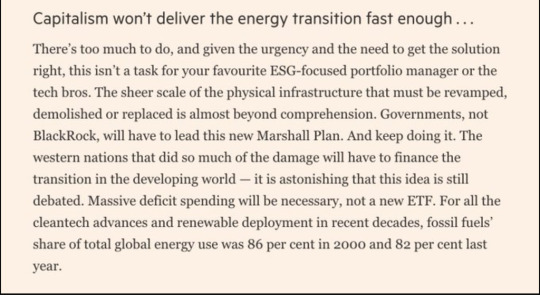
Some welcome clarity from the FT's energy editor↑
Jason Hickel shared this image--FT has a strict paywall--and tweeted.
7 notes
·
View notes
Text

🥵 NASA Announces Summer 2023 Hottest on Record
📈 Here are your go-to downloadable charts & graphs to share
🌡️ Reminder: NASA is in the TOP 4 trusted sources of global warming information for ALL POLITICAL DEMOGRAPHICS
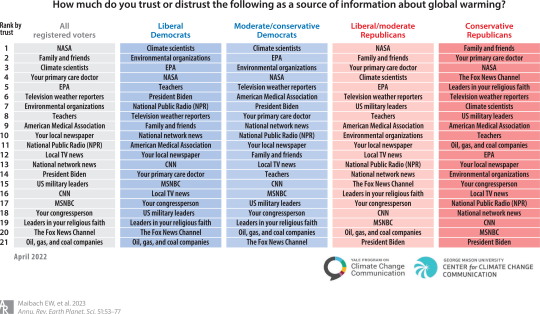
#climate change#climate#global warming#climate communication#NASA#hottest year on record#climate emergency#climate crisis#climate disruption#environment#stats#social science#global climate change#climate Data#trust
4 notes
·
View notes
Text
I love when the low temps overnight are what the highs are supposed to be this time of year it’s my favorite
Why is it going to be 90*F+ this week
4 notes
·
View notes